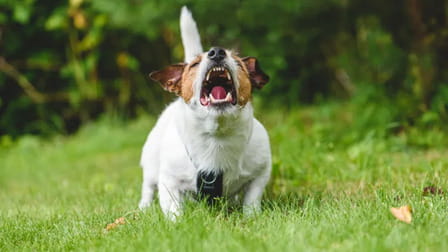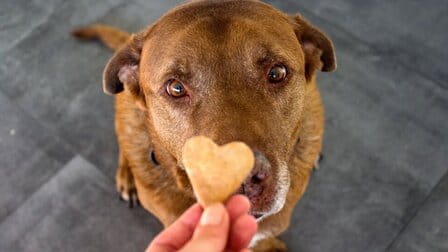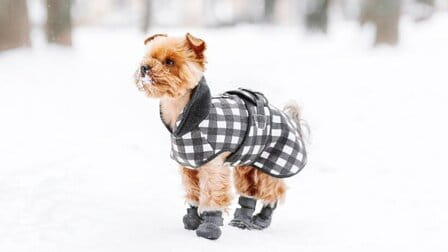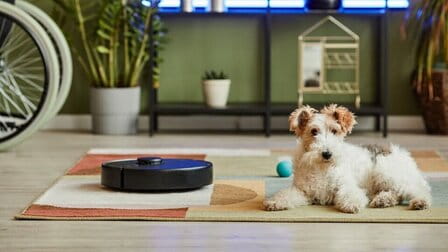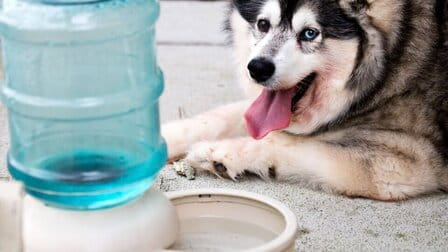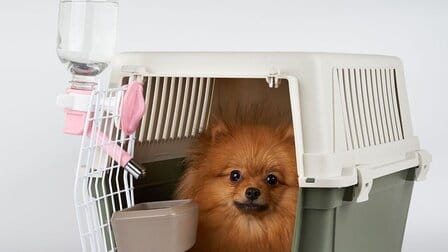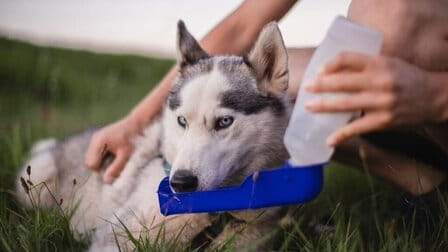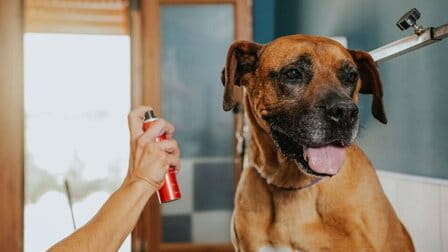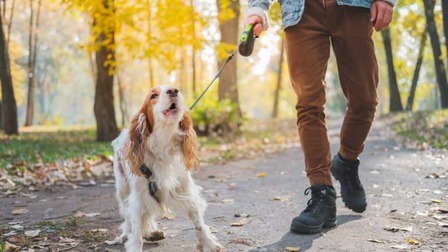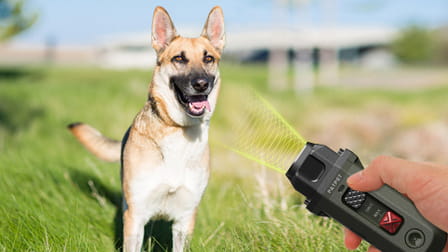A muzzled dog is frequently thought to be vulnerable to a nasty assault or bite. Because of the way the muzzles are depicted, they are thought to be employed for discipline rather than training.
Whether or not your dog is aggressive, you should train them to wear a muzzle. There are several uncommon occurrences that people are unaware of. And preparing your dog ahead of time can make a significant difference in how they behave. Allow us to assist you in transforming misunderstandings or myths regarding muzzles into reality, and how, with right use, they can be a useful tool in your dog's training. And here are some benefits of muzzle training:
1. Benefits of Muzzle Training
Dogs are muzzled for a number of reasons. It's possible that the dog is recuperating from an injury or is highly anxious when meeting new people. Certain dog breeds are required to be muzzled in the presence of strangers or other canines in various countries. Dogs who bark, chew, or devour stuff on the ground should not be muzzled. It's also not a good idea to use it on a biting puppy. For assistance with such situations, you should contact your dog trainer. Here are some of the benefits of muzzle training that you should be aware of:
Ensure that both people and animals are safe

Because recovery from violent behavior does not happen overnight, a muzzle might be a useful aid at this time. It's particularly useful if you've just gotten a new dog and aren't sure how they'll respond in a new scenario, like a dog park. However, you must ensure that your dog is soothed by using a crate.
Assist others in feeling more at ease around your dog
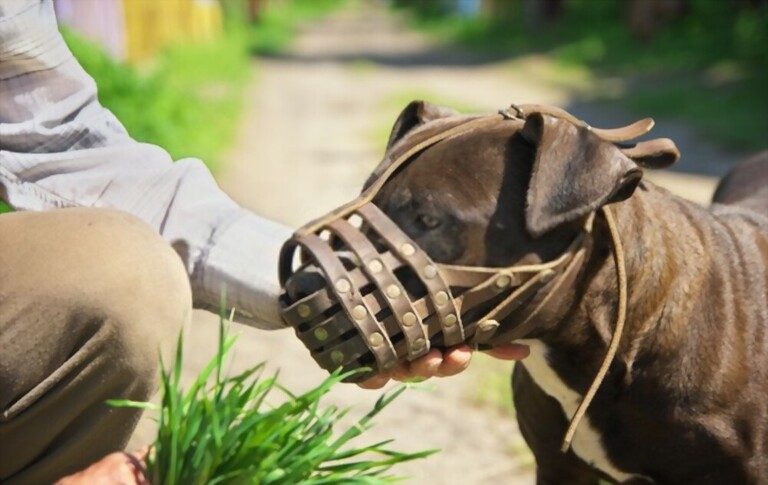
One issue that aggressive dogs have throughout rehabilitation is that they are frequently apprehensive and scared of the humans around them. Stereotyping may cause this reaction in some breeds, whether or not they have previously displayed violent behavior. Aggressive conduct might be triggered by other people's bad energy. Dog muzzles can help with a variety of issues.
Make you more relaxing

Your impact is equally as significant as your dog's. Knowing that your dog can't bite because of the muzzle might help you stay calm and confident, especially if you're in an unfamiliar area. If your dog has a history of biting, muzzle training them should be done as soon as possible.
Travel abroad together

Large dogs or particular breeds of dogs are compelled by law to wear muzzles in numerous nations. If you intend to go overseas with your dog, familiarize yourself with the local rules and prepare your dog ahead of time.
Muzzles should not be used to solve any behavioral issues. Alternatively, you may seek the advice of a dog breeder to determine how to best fit your dog's recuperation method.
2. Step-By-Step Approach to Muzzle Training

Dogs and cats can consume street foods that irritate their stomachs, they may have the terrible habit of eating other animals' waste, posing a harm to wildlife, or they may be concerned about strangers or other dogs around. Veterinary operations are another key reason to wear a muzzle.
Seeing the vet may be frightening for your dog, especially if they are in pain, since they may not comprehend what is going on. Furthermore, some dogs may growl, snarl, or bite to express their discomfort, worry, or fear.
If you're not sure if your dog will growl, snap, or bite, get him acclimated to wearing a muzzle. If the vet wants you to muzzle your dog to train it not to be offended, it's to ensure the safety of the vet, your dog, and you.
Most dogs dislike wearing a muzzle for the first time since it is an unusual sensation for them, which can make them even more apprehensive about going to the doctor.
You should devote a significant amount of effort to training your dog's muzzle so that they are comfortable wearing it. After only three to four training sessions, they will be used to each other. Other dogs may need to repeat some or all of the stages multiple times before moving on. You may make wearing a muzzle more pleasurable for them and get long-term results by following our step-by-step guidelines.
Step 1: Gently introduce the muzzle
If you've tried using a muzzle but had no luck, it's possible that your dog is afraid of it. If this is the case, don't try to put it on. Place their muzzle on the ground and urge them to smell or touch it instead.
Give your dog lots of praise and a tasty treat every time they do anything similar. It's also critical not to force them to contact the muzzle. You can move on to the following phase after they're happy to let you touch their snout and look for a treat for you.
Step 2: Encourage more research
Put a yummy reward inside the snout, such as a piece of cheese or sausage, then let your dog poke his nose in it and bring it right out. You might call this action ‘snout in' after your dog has gotten used to inserting his nose inside the muzzle.
Step 3: Keep the muzzle in place but don't tighten it
Put some goodies in the muzzle's bottom. Say "snout in" and hold the strap behind your dog's head for a few seconds when he pokes his nose in. Allow them to guide his nose out after releasing him.
This activity should be repeated until your dog feels comfortable with it. When you hold the muzzle, you may find that chatting to your dog and telling them how well they're doing makes them feel more at ease.
Step 4: Place the muzzle around your dog's neck and secure it
After that, attempt to squeeze the muzzle over your dog's neck while keeping their nose out. To prevent producing noise, you should practice without muzzles.
Step 5: Fasten the muzzle for a few moments
Repeat step 3 but this time shut the muzzle behind the dog's head while the dog's nose is still within the muzzle. Then undo the clasp as soon as possible and let them put their nose out. Simply being in a rush at this stage will destroy all you've accomplished thus far.
Step 6: Increase the amount of time spent in the muzzle gradually
Start cautiously and gradually increase the amount of time you leave the muzzle alone in this stage. Remember to place your goodies in the basket before the dog gets his nose in, and keep chatting to them to let them know how well they're doing. After your dog's muzzle has been trimmed short, you may give them tasty goodies.
Conclusion
Do not imperil your dog or others by putting him in risk. You should not disregard the muzzle if you want to take proper care of your pet. And, of course, we are confident that after reading the benefits of muzzle training, you will purchase a muzzle for your pet.

